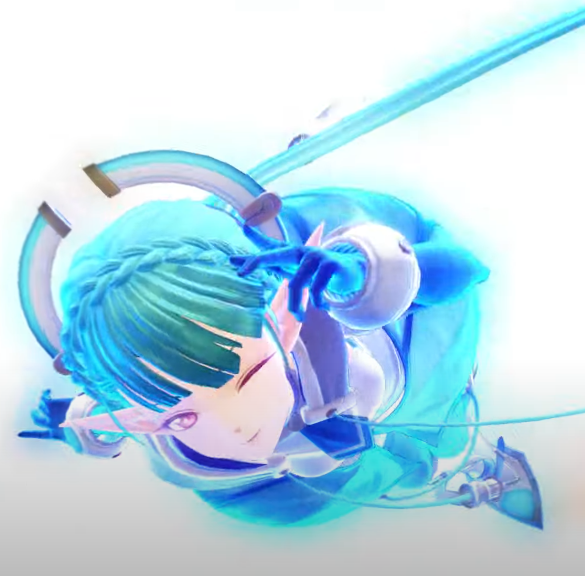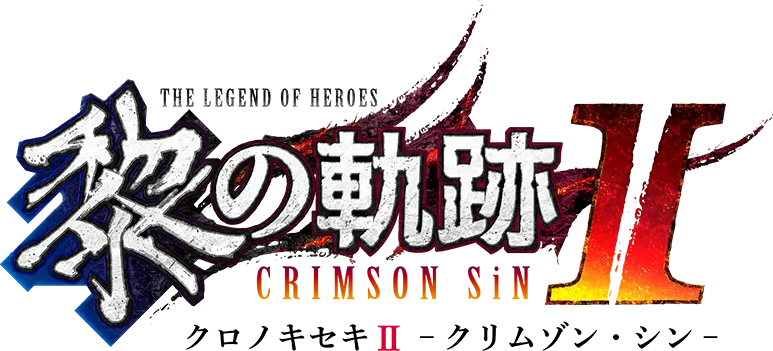Hello! Starting with Kuro no Kiseki II; Due to the nature of this game being a direct sequel, spoilers will be trimmed as much as possible – but there may be a few, as this game to no surprise, heavily relies on the completion of the previous game(s). By the way, this is probably biased. Kiseki holds a special place in my heart - This will not be a recurring theme for all reviews, especially for Kiseki, as we reach entirely new arcs with the Kiseki series.
I will be attempting to start text-based reviews with future games after completion. As of this time of writing, we are currently waiting for the update for Kuro no Kiseki II that will introduce extra story, as well as other characters, and even introduce further gameplay elements for continuing the gameplay through postgame. Note: temporary screenshots
First off - The cast!
The characters in Kuro no Kiseki II are full of the friends and allies that we met alongside Kuro no Kiseki I, with some of the enemies or gray-zone characters being those we are familiar with by the end of Kuro no Kiseki I. While there may not be many new characters introduced, the characters present have had their own developmental arc, sometimes alongside another character, and were able to grow further with this new entry into the Kiseki series. Some characters even saw long-time arc conclusions and wrap-ups to their story or through new methods that incredibly surprised me - which may pave the way for future characters that had their arcs concluded to show up in a new entry reinvigorated and more ready than ever before.
Next up - The soundtrack!
The soundtrack of Kuro no Kiseki II was breathtaking. With many new tracks, and some nostalgic tracks returning to the series, the incredible variety and new flavor of some of the tracks that played was phenomenal. I felt the true genius of Falcom JDK’s talent through the goosebumps I personally got with the timing of some of the new tracks.
I won’t lie - some scenes made me incredibly emotional. New boss themes that played were perfect for the theme that they portrayed, and some of the new ‘immersive’ tracks such as the field ones were incredibly empowering and invigorating. While not as ‘rocking’ as some of the songs in previous games, the music in Kuro no Kiseki II was awe inspiring, unique, and immersive - and at no point during the playthroughs did I feel the need to turn on my own music; something that does tend to happen when grinding elements are incorporated into a game, especially with heavy gameplay.
Gameplay -
Which brings us into the next part - The gameplay elements of Kuro no Kiseki II. These elements were vastly improved on the first game, and far more engaging and interactive than ever before. There are stealth segments, there are car-riding minigames, and even an entire extra dungeon to explore through and grind, or acquire materials to further enhance your characters’ prowess for the upcoming battles - The best part of the extra dungeons - they are always accessible.
The extra dungeon 'floors' are a set of nine floors of relatively-random dungeons that provide specialized rewards based on what you choose. Some provide armor, and some provide orbments. Others provide... well, nothing. Monster materials, and cooking ingredients that you will probably get from farming mobs. But hey, the combat is fun!

At no point during the game - save for more than 5-10 minutes - are you restricted from jumping into some quick monster slaying or (mostly randomized) dungeon exploring - if you so choose. Accessed via the laptops around the world in Inns, but also accessible through virtual ‘routers’ as - believe it or not - it is an Augmented / Virtual reality interface that you can dive into.

Each town, each region in each town, and almost every single area you go to has either a router or an Inn with a laptop accessible so that you are always able to hop into gameplay if you need a break from the story. Boy oh boy, was it convenient to be able to stop doing some cutscenes after some long scenes and hop into some gameplay - if you are a gameplay player of Kiseki, or were in need of some extra mira, sephith or even some randomized level-associated gear. If not, no worries, because, buckle up, the story was something else!
Story -
I won’t mince words. There are parts in the game where the scenes do go on for quite a while. Though, this is something I think most story-players of Kiseki are used to. There were certainly parts that I felt that did go on for quite a while with dialogue, but with the beautiful music accompanying them and intense story moments that happened made it not feel too long to go through.
There is a specific point in the game, that I believe was disliked by a lot of vocal players in the communities that I had seen - but even this long (it is LONG) chapter, served a pinnacle purpose - at least, in my opinion, it was present to hammer a point into the player’s head, and to show the true potential of a certain element of the gameplay mechanisms, and its correlation into the story, as well as to show the depth of the power shown by the wielder of this power.
Overall though, the story was full of growth, and question-answering, with further background for most characters being introduced. Note though, most, not all! There is still plenty of room for growth and further things to be answered in future entries. We can’t solve everything in a couple games, after all.
Combat -
Lastly, the combat experience was a vastly improved version of the combat elements present in Kuro no Kiseki I. We had field combat, as well as turn-based combat, and had a much more legible screen for the orbment or shard skill interface to assist with the combat. With one button, you are now able to pop open a menu that shows all possible skills for each type of orbment, confirming the elements required for each skill.
The combat has added functionality so you are now able to use predetermined ‘quick’ arts on the field based on your master quartz, tied with the normal attack combos as well as canceling and preemptive shard attacks (allowing you to force preemptive attacks on monsters that are hit long or hard enough) - which adds a bit more variety to the field combat as well.

There are other surprises and improvements that Falcom has made in the field combat that would be slightly spoiler to mention - but I can simply say that there is a certain situation where you may be surprised by the field battle - a huge hint at what is to come in Kuro no Kiseki III, or the new name that it goes with if a new arc does continue instead of following Van’s office.
The only caveat I would note with the combat - it was, as always, incredibly easy to 'break' the game with builds. Even on Nightmare, there were only a couple difficult fights, and they were only difficult due to the SP restrictions - a lot of story battles had conditions to not let anyone die at all, or you lose the SP. SP collected raises your ranks in each portion of the game, allowing you to gain rarer or more powerful gear or orbments. You certainly don't need to 'perfect' all the battles to achieve a max rank, and there is quite a lot of leeway this time around. I would like to see some very difficult battles return, perhaps even a return of the Abyss difficulty from a previous game.
Finishing thoughts -

Kuro no Kiseki II was an incredibly powerful and telling addition to the Kiseki series. Almost all of the elements of the previous game in the series were retained, while adding functionality and features. I did not mention previously - the new CGI and engine used in this game was incredibly surreal. The animations in the CGI scenes were among some of the most fluid scenes I have seen in a JRPG, and left me incredibly excited with the future of the important story scenes. Some of these elements can even be seen in the opening of the game.
I was left satiated with nearly all elements of the game, and for the first time in a long time, I didn’t even get the ‘empty’ feeling after completing a game. I was fulfilled, satisfied, and ready to take on the next adventure. Everything felt like it served a purpose, there were improvements to the systems that have been retained from the first game in the series, and overall the story and music worked hand in hand to deliver a compelling game.
I do wish we had some more questions answered, and there are definitely parts of the story and arcs that could have been improved, done better, or actually gave a few more breadcrumbs to the overall story - but I believe that this is something that always happens with each game in this series, as there must always be something that we need to acquire from the next game.
Perhaps the update will help alleviate some of these, and add a few breadcrumbs to look forward to; we will need to wait just a couple days to see! I look forward to seeing what improvements Falcom is able to continue to provide with future entries into the series, and I can say I am thoroughly impressed with Kuro no Kiseki II.

